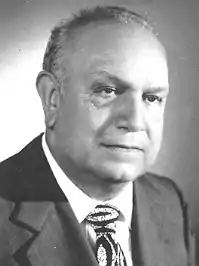1976 Italian Senate election in Lombardy
Lombardy elected its seventh delegation to the Italian Senate on June 20, 1976. This election was a part of national Italian general election of 1976 even if, according to the Italian Constitution, every senatorial challenge in each Region is a single and independent race.
| |||||||||||||||||||||||||||||||||||||
All 48 Lombard seats to the Italian Senate | |||||||||||||||||||||||||||||||||||||
|---|---|---|---|---|---|---|---|---|---|---|---|---|---|---|---|---|---|---|---|---|---|---|---|---|---|---|---|---|---|---|---|---|---|---|---|---|---|
| |||||||||||||||||||||||||||||||||||||
| |||||||||||||||||||||||||||||||||||||
Lombardy obtained three more seats to the Senate, following the redistricting subsequent to the 1971 Census.
The election was won by the centrist Christian Democracy, as it happened at national level. Seven Lombard provinces gave a majority or at least a plurality to the winning party, while the agricultural Province of Pavia and Province of Mantua preferred the Italian Communist Party.
Background
The Italian Communist Party, which had annexed the Italian Socialist Party of Proletarian Unity, strengthened under Enrico Berlinguer's leadership, reducing the gap with the Christian Democracy, which by its part obtained some votes from minor forces, as the Italian Liberal Party and the Italian Democratic Socialist Party, to face the red rising.
Electoral system
The electoral system for the Senate was a strange hybrid which established a form of proportional representation into FPTP-like constituencies. A candidate needed a landslide victory of more than 65% of votes to obtain a direct mandate. All constituencies where this result was not reached entered into an at-large calculation based upon the D'Hondt method to distribute the seats between the parties, and candidates with the best percentages of suffrages inside their party list were elected.
Results
| Party | votes | votes (%) | seats | swing |
|---|---|---|---|---|
| Christian Democracy | 2,170,893 | 41.8 | 21 | |
| Italian Communist Party | 1,598,097 | 30.7 | 16 | |
| Italian Socialist Party | 613,253 | 11.8 | 6 | = |
| Italian Social Movement | 210,741 | 4.1 | 2 | = |
| Italian Republican Party | 185,899 | 3.6 | 1 | = |
| Italian Democratic Socialist Party | 183,383 | 3.5 | 1 | |
| Italian Liberal Party | 109,028 | 2.1 | 1 | |
| Others | 136,997 | 2.4 | - | = |
| Total parties | 5,198,291 | 100.0 | 48 |
Sources: Italian Ministry of the Interior
Constituencies
- No senator obtained a direct mandate. Please remember that the electoral system was, in the other cases, a form of proportional representation and not a FPTP race: so candidates winning with a simple plurality could have (and usually had) a candidate (usually a Christian democrat) with more votes in their constituency.
Substitutions
- Paolo Zanini for Crema (28.4%) replaced Lelio Basso in 1978. Reason: death.


